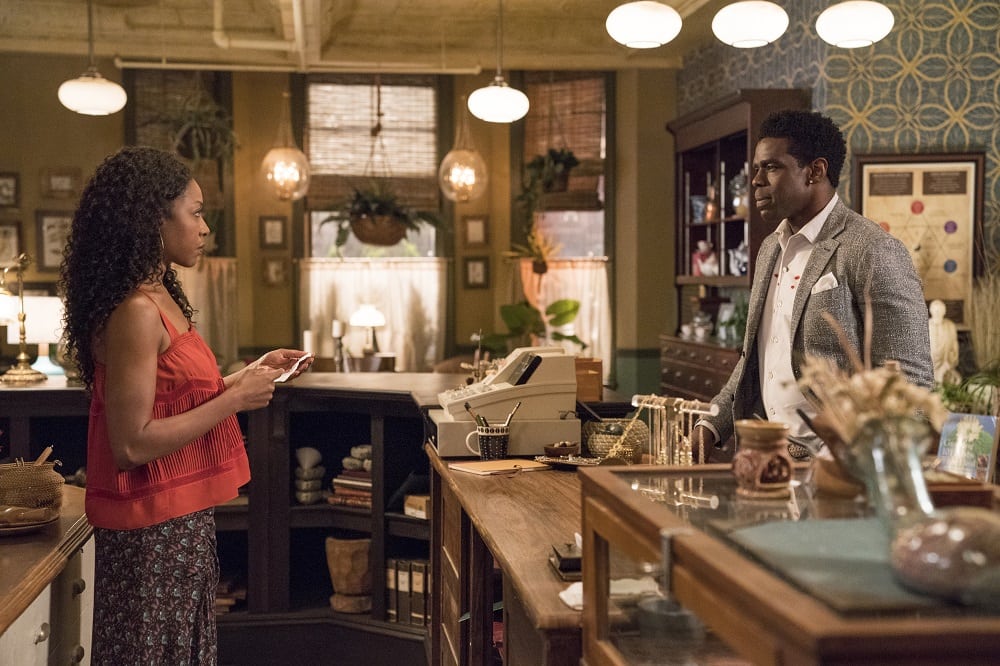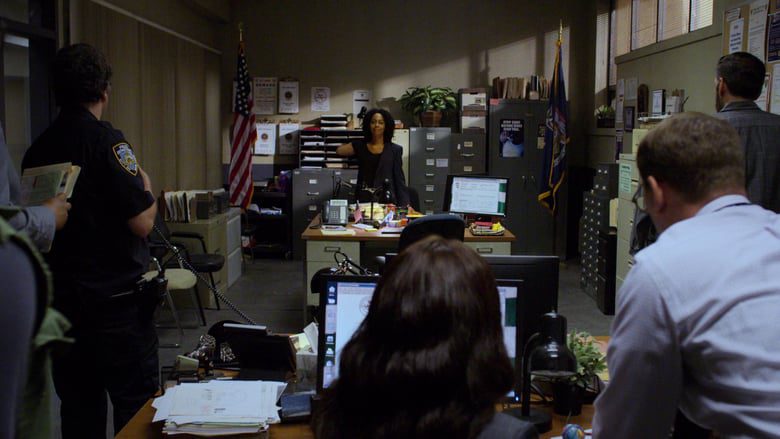The pacing on Marvel TV shows can be truly maddening. There are stretches of “Straighten It Out” wherein it feels like Luke Cage is seriously spinning its wheels, repeating points it’s made already. (We get it, Claire, maybe Luke isn’t as invincible as he thinks he is.) It’s enough to make one wish that the seasons for these shows were shorter (part of the reason The Defenders is so lean and mean is that it’s a svelte eight episodes, as opposed to the normal thirteen). The pacing can be a problem, but what makes it so much of an issue is that when episodes like “Straighten It Out” hit their stride, they’re downright thrilling.
Where Luke Cage continues to succeed, and differentiate itself from Marvel’s other TV offerings, is in its political bent. Even Luke’s costume is a political statement: a plain hoodie, the selfsame outfit in which many black men have been found dead over the last few horrible years. What draws the attention most, though, is season two’s focus on social media. Not only is there Griffith’s Harlem’s Hero app, but Luke is seen more than once taking selfies with fans, and whenever Luke Cage shows us that impenetrable wall of cell phones, one can’t help but think of the grainy footage uploaded to YouTube, showing malfeasance and abuse of power by the police (at one point Shades even says, “It’s not what they know, it’s what they can prove,” which comes off as unvarnished commentary after Mariah Dillard uses the phrase “alternative facts”). And here it is, used in a celebratory fashion. Showrunner Cheo Hodari Coker is not shy about his commentary, but he doesn’t beat the audience over the head with it. There’s a remarkable amount of subtlety on display, and Coker counts on the show’s viewers to be savvy enough to pick up on it.
Misty continues to struggle with her new position in the police department. Simone Missick is really excelling with what is tantamount to a subplot. In “Straighten It Out,” she gets her first real obstacle (non-arm division) in the form of Detective Nandi Tyler (Antonique Smith), with whom she appears to have a friendly rivalry. But that soon devolves into outright hostility, and we get a sense of what it’s like for a differently abled person to work in an environment like this. Unfortunately, Luke Cage pushes it too far, having two people make jokes about Misty’s arm in rapid succession. But it sticks the landing, as Misty exposes what remains of her arm to the precinct and says enough with the jokes. Like Luke, she doesn’t want to be a mascot. Through these scenes, we also learn some interesting background about the Judas bullets, namely that possessing any weaponry related to the “incident” of The Avengers is a felony offense, leading one to surmise that the Judas bullets are somehow related to Chitauri technology. It’s not explored any more than that, but it makes for a nice bit of connective tissue.
Shades and Mariah are still the best part of the show. Theo Rossi absolutely kills every scenes he’s in, and conveys Shades’ anger and insecurity without ever raising his voice, or sometimes without ever saying a word. “Straighten It Out” has a few scenes of men losing control of their temper, the first of which involves Shades shooting Arturo Rey, and losing $20 million while doing so, simply because Rey insulted Mariah. Tempers are running thin, and Luke Cage does an admirable job of making it seem like the walls are closing in on these characters. The Harlem of this show is its own ecosystem, unconcerned with the goings-on of the world, because Harlem is the world.
To wit: even Bushmaster has roots here, as he visits his father at Gwen’s, a restaurant named for Bushmaster’s late mother. Where season one pulled an impressive switcheroo, switching villains from Cottonmouth to Mariah Dillard (and then later, less successfully, to Diamondback), season two is making it clear from the jump that Bushmaster is a threat. Mustafa Shakir’s voice is so honeyed and mellifluous, his suits so well-fitting, that he has no trouble holding the viewer’s attention; by contrast, I often find myself forgetting what Diamondback looks like. There’s a great, telling shot in which blood from Bushmaster’s wounds starts seeping through his nicely pressed white shirt, chaos disrupting his thin veneer of civility.
Still, a lot of “Straighten It Out” exists in peaks and valleys. When the episode is on, it’s really on, but a lot of time it feels like it’s trying hard to justify its hour-long running time. When the episode drags, it becomes what Luke Cage should never be: boring. Luckily, that doesn’t happen all that often, but a case could be made that the Marvel TV shows have more runtime than content. (I’m telling you, ten episodes per season would really help. Look how much content the films are able to cram into the now-standard two and a half hours.) When Luke Cage is firing on all cylinders, it’s entrancing. But right now, it’s being given a lot of room in which to flounder.
A Few Thoughts
- We get to meet Mariah’s daughter, Tilda, who becomes Nightshade in the comics. She seems cool.
- That being said, season two of Luke Cage is devoting a lot of time to exploring relationships with people (Tilda Dillard, Rev. James Lucas) who weren’t even mentioned in season one.
- “You’re Jordan playing for the Wizards.” “But he’s still Jordan.” Misty Knight is cool as ice, and sometimes Simone Missick threatens to become the stealth MVP of this show. Right now she’s in a three-way tie with Theo Rossi and Alfre Woodard.
- Two great montages in this episode: Luke testing himself athletically, and the one at the end which ends with Luke beating the hell out of Cockroach.
4/5



